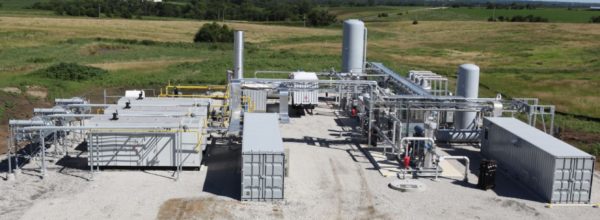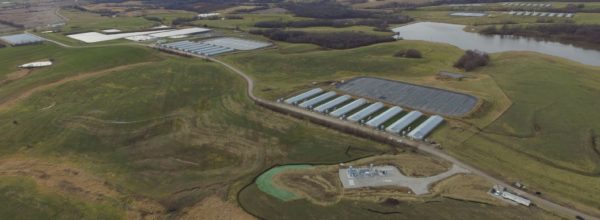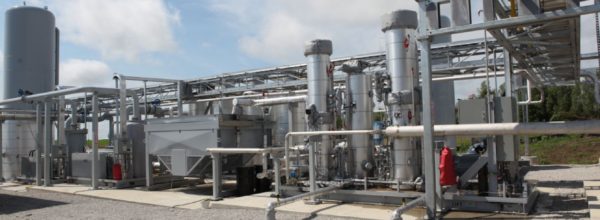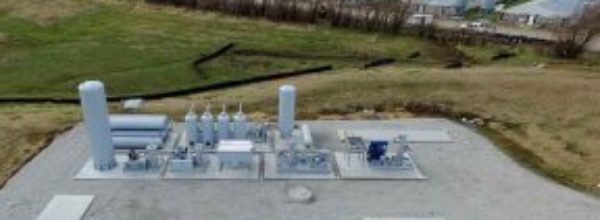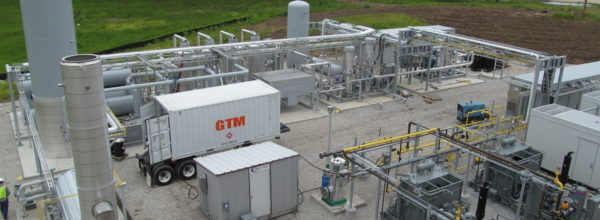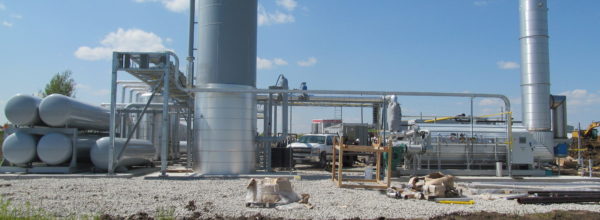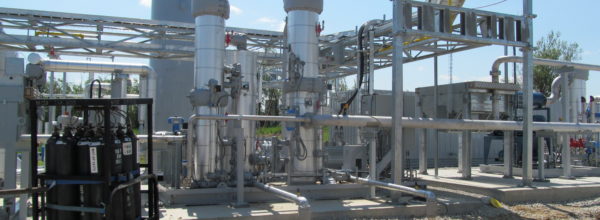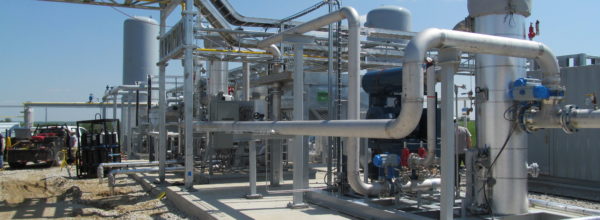Published by
Written by Bryce Gray
Beginning next month, the manure of northern Missouri pigs will provide energy to far-flung power users connected to a national pipeline system for natural gas.
The biogas project — which relies on anaerobic digestion of animal waste to produce methane — is the culmination of a five-year partnership between St. Louis-based Roeslein Alternative Energy and Smithfield Hog Production, the state’s largest owner of pig farms.
But the gas production facility poised to come online next month at Ruckman Farm near Albany, Mo., is only the start of what is intended to be a much broader marriage of renewable energy and agribusiness. Plans are in place to gradually apply the same technology to Smithfield’s nine hog-finishing farms across northern Missouri — a $120 million endeavor that will eventually harness the waste of approximately 2 million pigs and is projected to be the largest biogas project in North America.
“Think about 2 million pigs,” said Rudi Roeslein, the CEO and founder of Roeslein Alternative Energy. “That’s a waste treatment problem equivalent to a city the size of St. Louis.”
But where Smithfield had a waste treatment problem, Roeslein recognized an opportunity to capture — and sell — methane.
To do so, Roeslein’s engineers have set out to outfit Smithfield’s waste lagoons with high-density polyethylene covers, designed to trap gases that rise to the surface. The nine farms slated for Roeslein’s natural gas projects have a total of 88 lagoons, typically 4 acres in size, that concentrate the effluent from thousands of pigs housed in nearby barns. Through the process of anaerobic digestion, bacteria break down the manure and emit methane — a prevalent agricultural byproduct and a greenhouse gas more than 20 times as potent as carbon dioxide.
Now, instead of being released, the methane is captured, cleaned and funneled into a pipeline network that distributes natural gas around the country. Roeslein says the manure-driven process will yield 2.2 billion cubic feet of methane a year — the carbon footprint equivalent of taking 178,000 cars off the road.
“It’s no longer a manure storage facility,” Roeslein says of each lagoon’s conversion. “It’s a gas production facility.”
The project has seized an opening created by incentives for renewable energy and biofuel that have attracted customers ranging from coast to coast. In California, Roeslein Alternative Energy has arranged to supply fuel for the state’s growing number of compressed natural gas vehicles — a fuel source that even the ground delivery fleets for FedEx and UPS are incorporating. Across the country, the company will also sell gas to a utility in North Carolina, where state renewable energy benchmarks specifically aim to derive a certain amount of energy from swine waste. Roeslein Alternative Energy has been able to tap that market since North Carolina’s swine industry does not generally have the same level of pipeline access, nor the high concentration of waste lagoons offered by Smithfield’s farms in northern Missouri.
Without certain renewable energy incentives, natural gas is typically valued in the range of $3-$10 per million BTUs — a unit equivalent to the energy in almost 12 gallons of ethanol. But now, Roeslein Alternative Energy is able to sell it in the power market for $10-$15 per million BTUs, while in the vehicle market, renewable fuel standards enable Roeslein to fetch $20-$25 a unit.
Although piping gas directly into the pipeline system cost the project millions, the expenditure allows the company to reap those higher prices. By selling their product as gas — and not to the grid as electricity — Roeslein Alternative Energy has been able to avoid a common pitfall of other renewable energy projects. Chris Roach, the director of Roeslein Alternative Energy, says that on-site conversion to electricity does not net as high a price and is also less efficient, losing up to 60 percent of energy as heat during the process. But connecting to a pipeline, he says, is often cost-prohibitive for smaller projects.
Though the launching of the Ruckman Farm biogas facility represents a significant milestone, Roeslein already has his sights set on the next phase of the project. That step, he explains, is to complement manure-based methane production on Smithfield’s nine farms with biomass from prairie grasses planted and harvested on marginal land not suitable for crops. Adding prairie grasses to the mix using above-ground digesters is expected to boost natural gas production by another 2 billion cubic feet annually, or nearly double.
While the methane is what makes the venture profitable, Roeslein Alternative Energy touts its impacts on water quality as another selling point.
“When you have a big rain event, then you have the risk of a flood and a release,” said Roach, referring to waste lagoons. Covering them, however, mitigates that risk and reduces water treatment costs to farmers, while also trapping odors. Roach says that addressing concerns about compliance in those areas provided much of the incentive for Smithfield’s farmers to take part in the project.
Roeslein officials say water quality in the area will be further bolstered as the project incorporates the restoration of native prairie grasses. Those grass varieties and their extensive root systems help absorb moisture and anchor soil, alleviating flooding and erosion. Smithfield and other land owners will also benefit financially by selling Roeslein the grass grown on their property as a fuel source.
To Roeslein, the project is driven by overarching questions about how to promote renewable energy in a way that diminishes the tremendous environmental impact of conventional agriculture, and especially the meat industry. The World Bank has estimated that, globally, agriculture accounts for more than 40 percent of total methane emissions.
Roeslein sees potential for the same technology to be applied much more broadly throughout the country’s farms. A 2014 U.S. Department of Agriculture report, for instance, identified more than 8,200 livestock operations in the U.S. that would be suitable for biogas systems. Of those, a mere 239 had the technology in place.
But hurdles remain. Zhiqiang Hu, a University of Missouri engineering professor who specializes in renewable energy issues, says biogas projects of this scale are quite rare in the U.S., in part because of the technical barriers that exist.
“Harvesting biogas from a large surface area and those large ponds on bigger hog farms is really a challenge,” he said.
Hu added that American biogas development has lagged behind Europe and other international leaders of the technology, perhaps because higher population densities abroad create “more pressure to do waste disposal properly.”
But Roeslein is betting on biogas finding a toehold closer to home.
“There’s a whole lot of methane emissions coming off of how we raise protein in this country,” said Roach. “Our goal is to come up with that solution that’s a way to enhance our agribusiness generally, from the small farmer up to Smithfield.”


